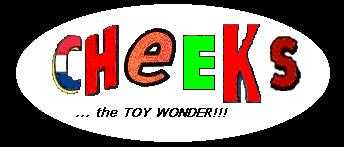
Unca Cheeks the Toy Wonder's Silver Age Comics Web Site!
the legend of IRON MAN
(Part Two)
![]()
Every once in a very great while... a comics character and an artist just find one another, is all.
In many instances, such unions are possessed of a peculiar sort of irony: namely, that -- prior to said artist taking on the interpretive duties of the character in question -- he (or she) will frequently have labored dilligently in the comic vineyards for some time, to little (or no) real acclaim.
Such was the case (for instance) with comics maestro Steve Ditko, prior to his early, definitive stewardship on the joint parts of SPIDER-MAN and DR. STRANGE; likewise, veteran draughtsman Gil Kane on the initial Silver Age ATOM and GREEN LANTERN series'.
So, too, was it with the unlikely "wedding" of Iron Man and (then) little-regarded ex-EC, ex-Charlton Comics staffer George Tuska.
Mr. Tuska was a "problematic" comics artist, in many ways: his human figures suffered from a somewhat "blocky" appearance, as if they'd all unwittingly left the wire hangers inside their clothing before getting dressed in the morning. Too: their "poses" frequently seemed stiff, and overly-mannered... as if they'd been chiseled onto the page, rather than penciled.
Withmost comics characters, such obvious shortcomings as these would almost certainly prove the most damning of liabilities.
With the massive, armor-clad Iron Man, on the other hand...?
Well... the evidence (in the form of the accompanying comics covers, here
and below) speaks amply for itself. ![]()
Having now catalogued his artistic faults... it's only fair, really, to categorize Mr. Tuska's virtues with as fair and dispassionate an eye.
Chief amongst these: he was a consumate storyteller.
No matter how (seemingly) impenetrable the plot handed down unto him -- no matter how difficult to render some telling, tech-based "plot point" upon which the entire issue, resultingly, may "hang" -- George Tuska was as methodical as a country vetrinarian, and as thoroughly dependable as a British railway schedule.
He was also a more than passing fair costume designer, as well. One could as readily drift off into easy, dreamlessslumber counting out the numerous poorly-drafted (from a visual sense, I mean) super-villains who garnered a new found respect from the comics readership of the day after submitting themselves to a careful "re-fitting" by Master Tailor Tuska, as could one by numbering an equivalent measure of fence-hopping sheep.
The cover of IRON MAN #4 [immediate right] is an exemplary case in point,
where long-time bad guy laughingstock "the Unicorn" (whose previous eyesore
of a get-up was so unremittingly godawful that I steadfastly refuse even to
afford it sufficient space on this page to mount a proper defense for itself)
found a new life as one of Iron Man's chiefest sparring partners after submitting
himself to the George Tuska equivalent of a GQ fashion shoot. Clothes
-- as they say -- do make the man. ![]()
Some super-villains, however, are -- whether by a flaw in the initial conceptualization,
or else plain, ordinary hamfistedness-in-execution, in general -- well and
truly beyond "saving" by means of a cosmetic makeover. Such was the
case, for instance, with the hideously stereotypical "yellow peril" menace
known as "the Mandarin." [see cover, below]
A far more interesting nemesis was the power-mad criminal mastermind Basil Sandhurst -- a.k.a., "the Controller." [see cover, below]
An intellectual colossus, forced to reside within a frail and infirm physical shell, the Controller's unique modus operandi was to conquer more physically powerful super-heroes; imprison them within the remote fastness of this hideaway or that; and -- by incomprehensible technological means -- drain their physical might, so that he might then go out once more and capture an even more powerful character, in turn. And so on, and so forth, until (apparently) the end of time, forever and ever, world without end, amen.
It was an intriguing concept: the man so terrified and repulsed by his own frailty and weakness, that he (quite literally) based his own continued existence upon the stolen might of others. As scripted by the character's creator (underrated comics scribe Archie Goodwin), the ironies inherent in Sandhurst's unique and personal tragedy were well-presented, and stand out -- even today -- as worth noting, in particular.
If I had to select one of Iron Man's regular opponents as a personal "favorite," however... I suppose I'd lean closestto that most unusual assassin-for-hire: "Whiplash." [see cover, accompanying]
Eschewing such common, garden-variety weaponry as the gun, the knife or the cleverly-concocted dram of poison, Whiplash's chosen means of execution was a diamond-flecked whip... one even further modified so that, through it, he could channel lethal, high-voltage surges of electricity, as well.
As the cover to the immediate right well demonstrates... this was a peculiarly effective means of close-quarters combat, when utilized by a master of same.
(At the very least: I think I could count on both Spider-Man and
Iron Man offering a somewhat pained "aye," in rueful second of the motion.)
![]()
OTHER SIGNIFICANT MARVEL TITLES of the Silver Age
PAGE FIVE: Iron Man (Part One)
"MORE COMIC BOOKS," YOU SAY...?
The DC Comics Sub-Directory
The Marvel Comics Sub-Directory
The Miscellaneous Comics Sub-Directory
The "Gotta Find That DC Character" Menu
The "Gotta Find That Marvel/Miscellaneous
Character" Menu